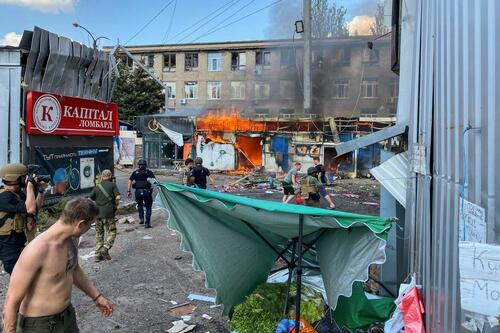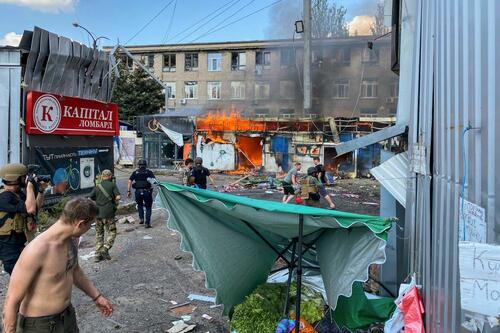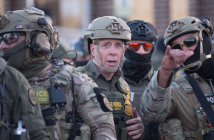The New York Times has issued a surprise about-face regarding the September 6 deadly missile strike on the center of the Ukrainian city of Kostiantynivka, which is in Donetsk Oblast.
Initially it was universally reported among all major international press that it was a Russian attack which killed at least 15 civilians and injured 30 more. It was among the single deadliest strikes on a civilian area since the start of the war, given a busy market had been directly impacted.
The fresh Tuesday Times report underscores that less than two hours after the market was struck, “President Volodymyr Zelensky blamed Russian ‘terrorists’ for the attack, and many media outlets followed suit.” The NY Times was at the time among those major outlets which uncritically went with Zelensky’s version of events.

But the missile came from the Ukrainian side, with the NY Times’ investigators finding that it was a Ukrainian surface-to-air missile that hit the busy civilian area and killed and wounded scores.
One of the key videos which the NYT analyzed to reach this conclusion was actually provided by Zelensky’s office, ironically enough.
According to the New York Times report, “evidence collected and analyzed by The New York Times, including missile fragments, satellite imagery, witness accounts and social media posts, strongly suggests the catastrophic strike was the result of an errant Ukrainian air defense missile fired by a Buk launch system.”
“Further evidence reveals that minutes before the strike, the Ukrainian military launched two surface-to-air missiles toward the Russian front line from the town of Druzhkivka, 10 miles northwest of Kostiantynivka,” the report continues.
The newspaper’s own correspondents were actually in Druzhkivka and reported hearing the outgoing missile launches which started at 2pm, and one journalist even record the sounds.
In contrast to Kiev’s claims that it was a Russian missile launched by an S-300 system, the Times details the following:
In the aftermath of the attack, Ukrainian authorities said Russian forces used a missile fired by an S-300 air defense system, which Russia has used both to intercept aircraft and strike targets on the ground. But an S-300 missile carries a different warhead from the one that exploded in Kostiantynivka.
The metal facades of buildings closest to the explosion were perforated with hundreds of square or rectangular holes, probably made by cube-like objects blown outward from the missile.
Measurements of the holes — and fragments found at the scene — are consistent in size and shape with one weapon in particular: the 9M38 missile, which is fired by the mobile Buk antiaircraft vehicle. Ukraine is known to use the Buk system, as is Russia.
The investigative analysis also makes heavy use of open source intelligence, including photos and videos of the projectiles flying over the area, and the aftermath of the deadly strike.
Was it a tragic mishap when all Western media blamed Russia?
“The attack appears to have been a tragic mishap.” https://t.co/6AP7t2ojhn
— asad abukhalil أسعد أبو خليل (@asadabukhalil) September 19, 2023
Continue Reading: zerohedge.com





Leave a Reply